Homer Lake's Historic Maple Sugar Grove
Introduction
Text-to-speech Audio
"There being but very little game in that place, we had nothing but our meal of Indian wheat to feed on; yet we discovered a kind of manna, which was a great help to us. It was a sort of tree, resembling our maple, in which we made incisions, whence flowed a sweet liquor, and in it we boiled our Indian wheat, which made delicious sweet, and of a very agreeable relish." - Henri Joutel during his 1684 exploration of Illinois.
For centuries, the Historic Maple Sugar Grove in Homer Lake Forest Preserve has been a place where trees have been tapped, sap has flowed, and sweat has helped produce a sweet result, beautiful amber maple syrup.
Images
Tapped trees in the Maple Sugar Grove (2015)
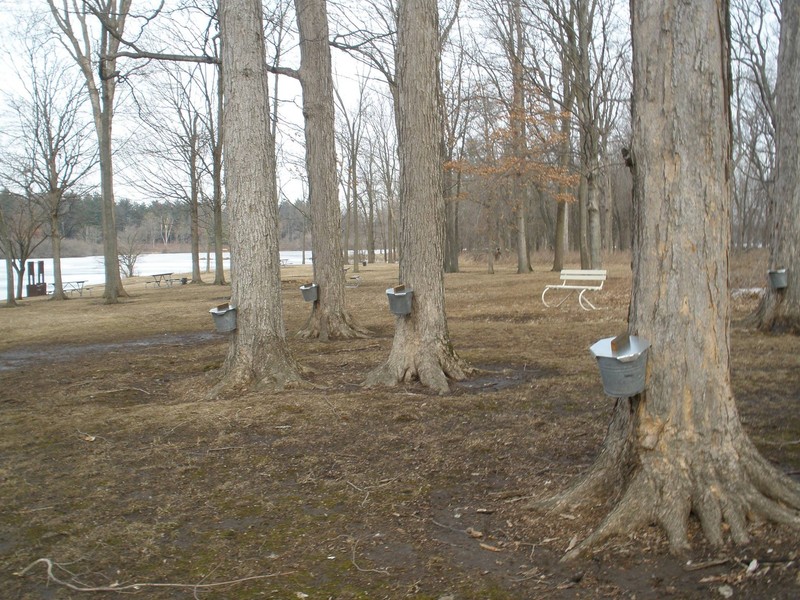
"Indian Woman Tapping Maple Sap" - Roland Reed, Photographer (1908)
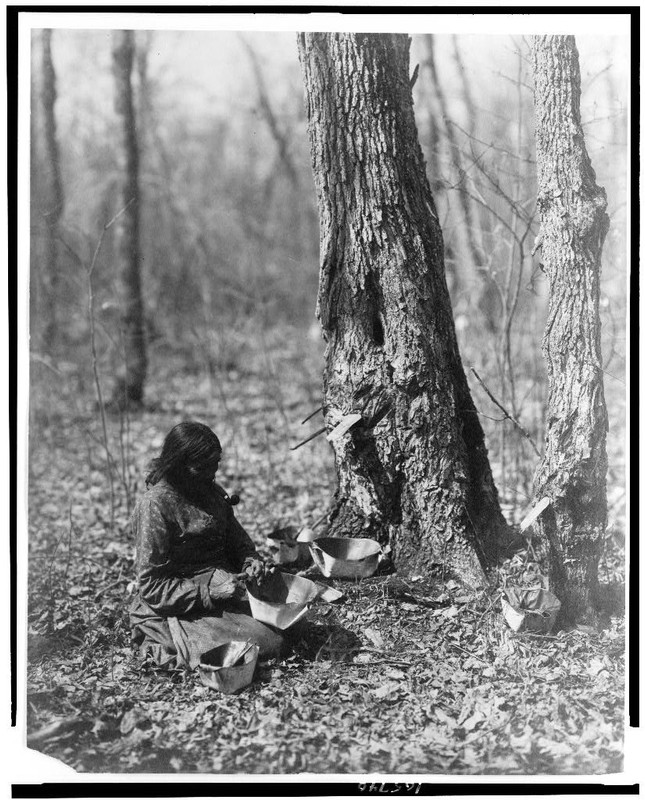
"Indian sugar camp" John C. Mcrae, Engraver, and Seth Eastman (1853)
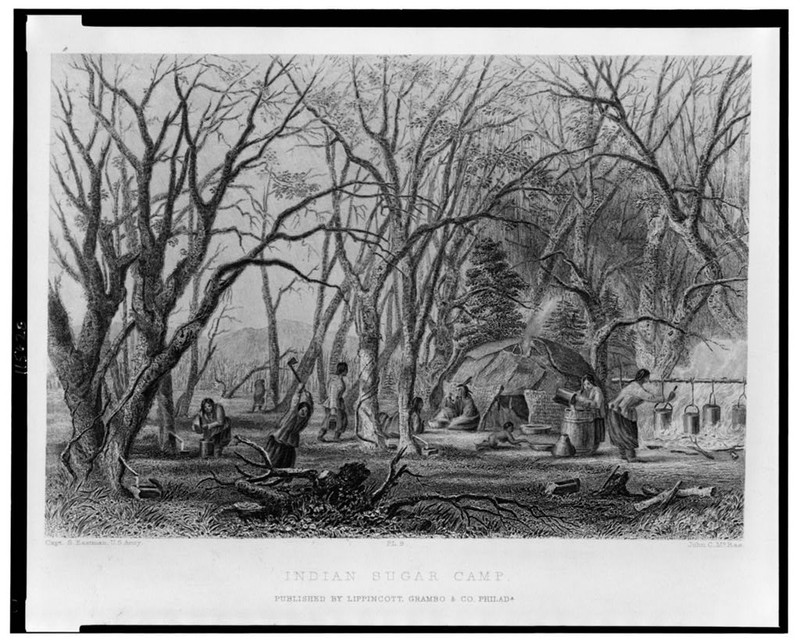
Men at a sugar camp near present-day Sadorus, Illinois. Image also appears on the reverse side of the postcard shown next. (1909)
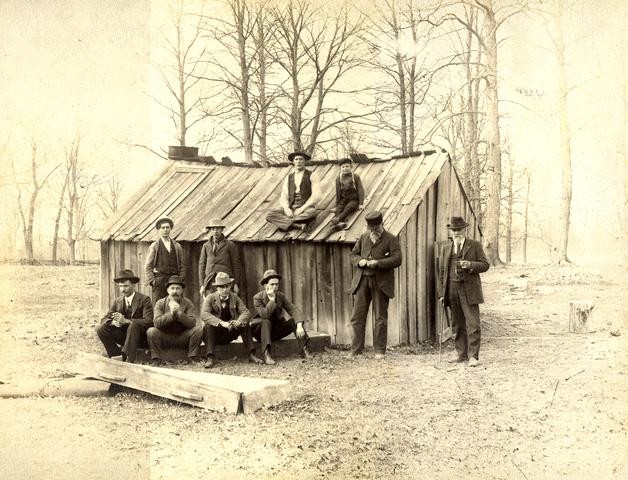
Postcard message on the reverse of the print of the old sugar camp. (1909)
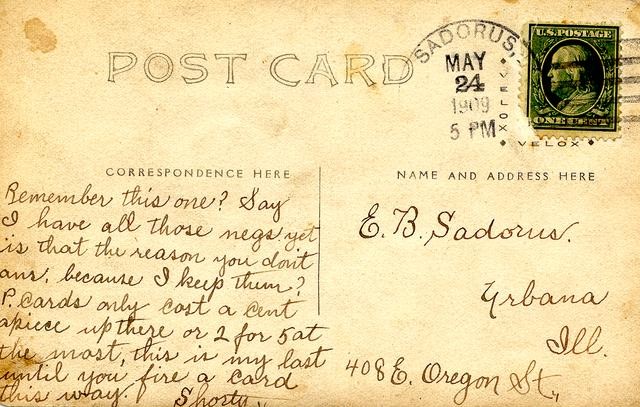
Group of men, boys, and a dog boiling syrup at sugar camp. (c. 1910)
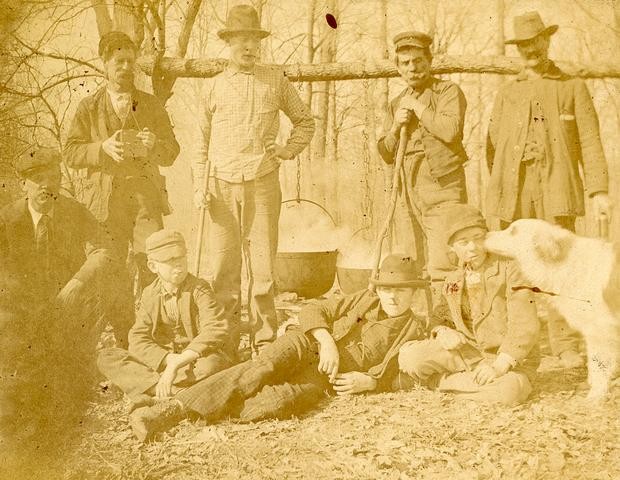
Man boiling maple syrup in central Illinois sugar shack (c. 1910)
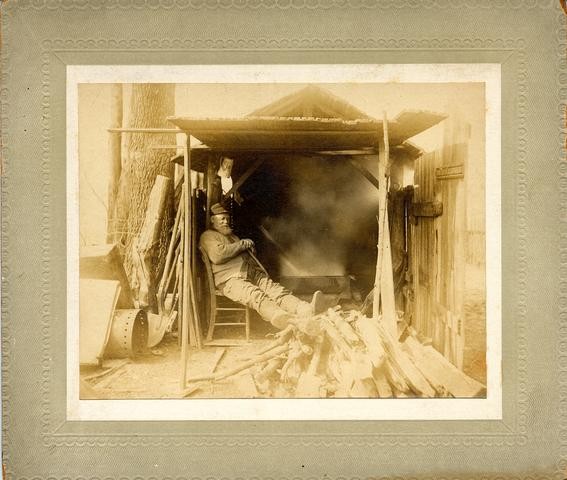
Handwritten ten-stanza poem about the joys of the sugar camp pictured previously. At the bottom is a line saying that the camp was torn down October 1910, after standing probably half a century.
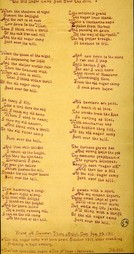
Visitors during an annual "Maple Sugar Days" program learn all about the history and science behind maple sugaring as well as how to tap trees themselves. (2018)
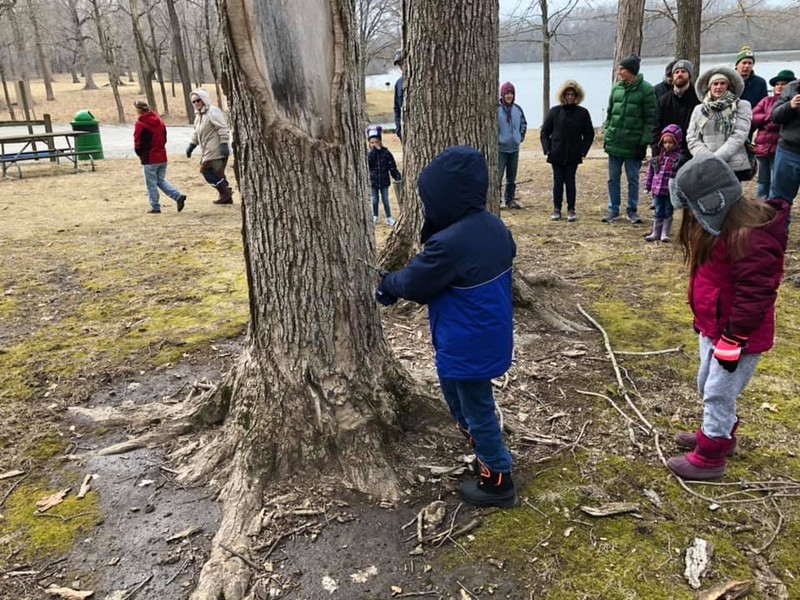
A young visitor uses a hand drill from the Museum of the Grand Prairie's Education Collection to tap a maple tree. (2017)
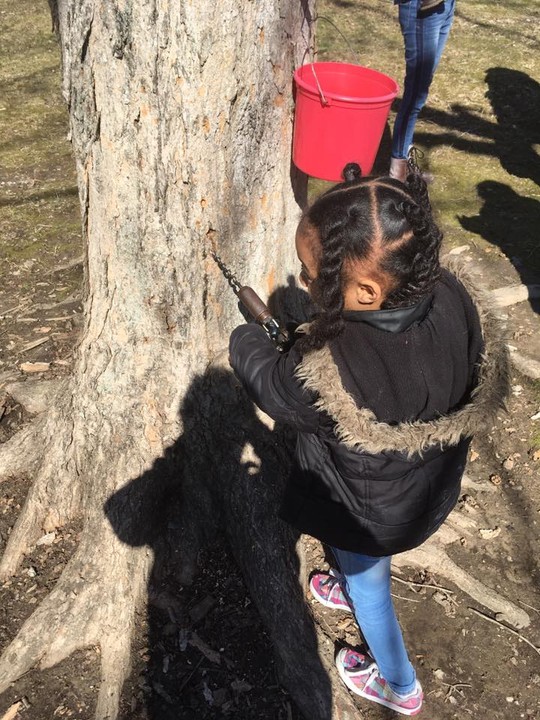
CCFPD volunteer, John Garvey, shows visitors how to tap maple trees. (2015)
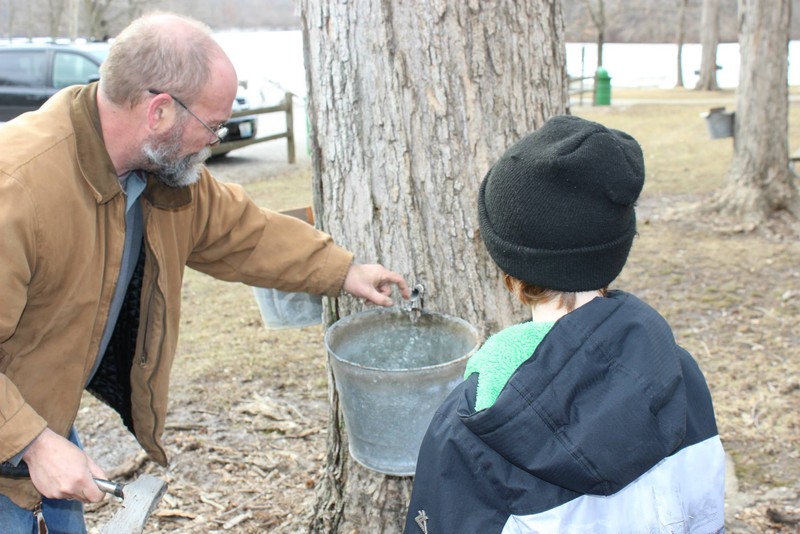
Trees in the Maple Sugar Grove during the fall (2018)
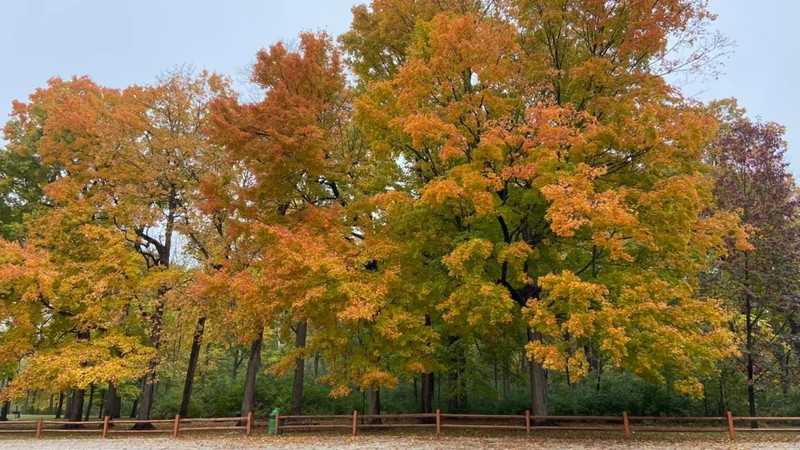
A great-horned owl family sit in a tree in the Maple Sugar Grove. How many owls can you spot? (2019)
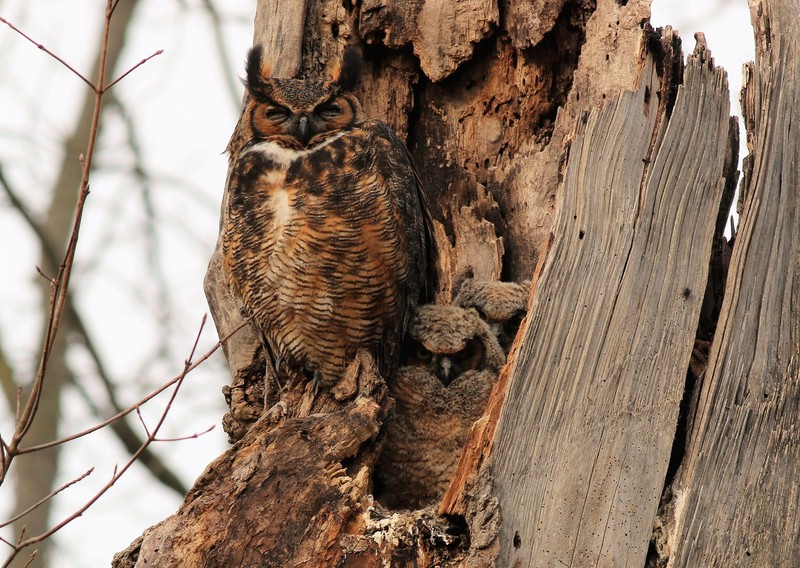
Informative Flyer About Maple Sugaring
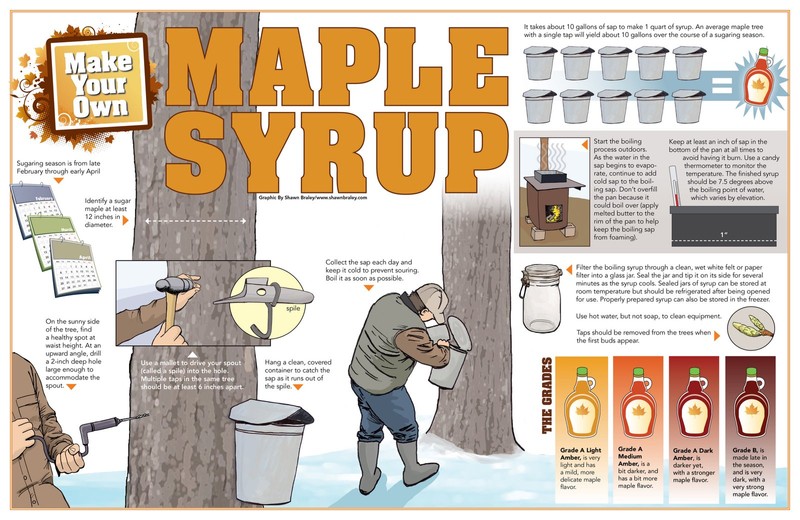
Backstory and Context
Text-to-speech Audio
During the 1890s, a man named Tom Richards operated a sugar camp in the Maple Sugar Grove that now resides in Homer Lake Forest Preserve. Long before European settlers began to process maple sugar in central Illinois, most maple sugaring historians believe that Native Americans had been tapping maple trees for centuries.
Despite this claim, there is no clear and definitive origin story pinpointing the discovery of maple tree tapping and sugar processing. However, many Native American legends exist to describe the origin of maple sugaring. According to one Iroquois legend, Woksis, an Iroquois chief, embarked on a hunting trip one day. That morning, he removed his tomahawk from the maple tree where he left it the night before. He left for the day and the weather began to warm, the gash in the tree where his tomahawk once resided dripped sap into a nearby bucket at the base of the tree trunk. As the evening neared, Woksis' wife, was in need of water to boil their dinner. To save her a trip from going to gather water, she used the bucket of sap she found by a nearby maple tree. As Woksis returned from his day of hunting, he smelled from far away the sweet smell of dinner his wife was preparing. Once he arrived, he saw that his wife had cooked a deliciously sweet dinner that was thanks to the amber maple syrup that his wife had boiled down for dinner. Thus, Woksis and his wife took a liking to the maple syrup and the practice of maple sugaring began.
Similar to what was described in the legend of Woksis and his wife, Native Americans made maple sugar by cutting a gash in the tree and collecting sap in containers. Sap was evaporated by placing it in hollowed logs and dropping hot rocks into the liquid.
When early settlers ventured into Illinois and met Native Americans tapping maple trees for syrup, settlers quickly embraced maple sugar and syrup as an inexpensive sweetener. They provided technological improvements to the process including augers to drill into the trees, spouts for directing the sap, and iron kettles over fires for boiling the sap. With the advancements in technology, popularity for maple sugaring soared and many sugar camps complete with sugar shacks popped up throughout central Illinois, including the sugar camp operated by Tom Richards in Homer Lake's Historic Maple Sugar Grove. Well-known Illinois photographer, Frank Sadorus, captured life at a nearby sugar shack at the turn of the 20th century. Check out the images attached to this entry to learn more!
When choosing a tree, many ask "Why are maple trees chosen for syrup?" All trees produce sap, however, the sugar maple sap has the highest sugar content. In late winter, sap carries stored from roots to the swelling buds.
The sugar camp operated for only a few weeks in late winter. This is when sap was flowing at its peak. Maple sugaring became a large endeavor and oftentimes, an worthy excuse to gather together. Families and neighbors helped with the operation. Children dropped hot syrup on to cold snow to create a chewy candy. Laughter and song rang through the grove.
In 1850, 60 of the 102 counties in Illinois produced 248,904 pounds of maple sugar all together. At that time cane sugar became more available and less expensive. By 1880, cane and maple sugar were the same price.
The Homer Lake sugar camp produced sugar and syrup into the 1920s. Roughly 400 maple trees were tapped. Buckets of sap were loaded onto a horse-drawn sled.
Today, only the maple trees remain to remind us of firelight, voices, and sweets on a frosty February evening. To continue the education of maple sugaring in central Illinois, the Champaign County Forest Preserve District annually hosts "Maple Sugar Days" events to teach visitors the history and science behind maple sugaring as well as the process involved so visitors can tap trees of their own. If this program interests you, visit www.ccfpd.org each winter to find more details and dates for these wildly popular annual events.
Sources
Champaign County Forest Preserve District, The Sugar Camp: Tapping Homer Lake’s Sweet History Interpretive Sign, Homer Lake Forest Preserve, Homer, IL, 2021.
Nearing, Helen and Scott, The Maple Sugar Book (Schoken Books: New York, 1950).
Illinois State Museum, Frank Sadorus: Illinois Photographer, 2002. http://www.museum.state.il.us/ismdepts/art/sadorus/.
Mcrae, John C., Engraver, and Seth Eastman. Indian sugar camp / Capt. S. Eastman, U.S. Army ; John C. McRae. , 1853. Photograph. https://www.loc.gov/item/2001696050/.
Reed, Roland, photographer. Indian Woman Tapping Maple Sap. , ca. 1908. Photograph. https://www.loc.gov/item/92511364/.
University of Vermont Libraries, “Maple Research Website,” University of Vermont Libraries, March 20, 2020. https://researchguides.uvm.edu/c.php?g=290518&p=1936099.
Champaign County Forest Preserve District
Library of Congress
Library of Congress
Frank Sadorus Photography Collection, Illinois State Museum
Frank Sadorus Photography Collection, Illinois State Museum
Frank Sadorus Photography Collection, Illinois State Museum
Frank Sadorus Photography Collection, Illinois State Museum
Frank Sadorus Photography Collection, Illinois State Museum
Champaign County Forest Preserve District
Museum of the Grand Prairie
Barbara Peters
